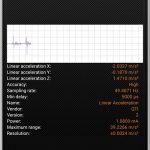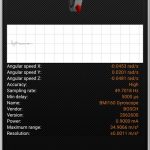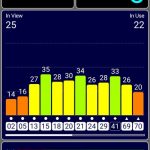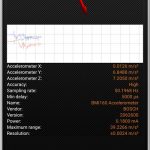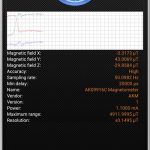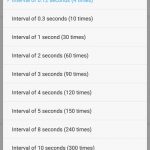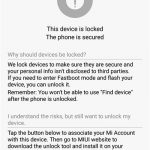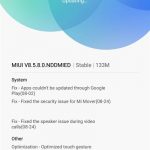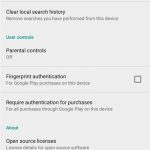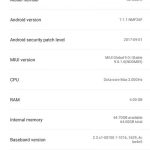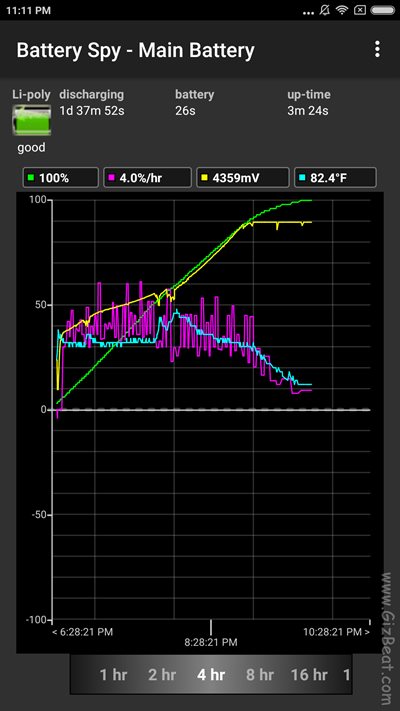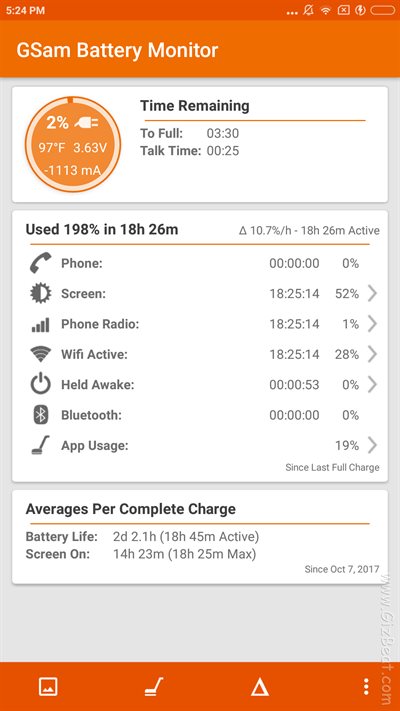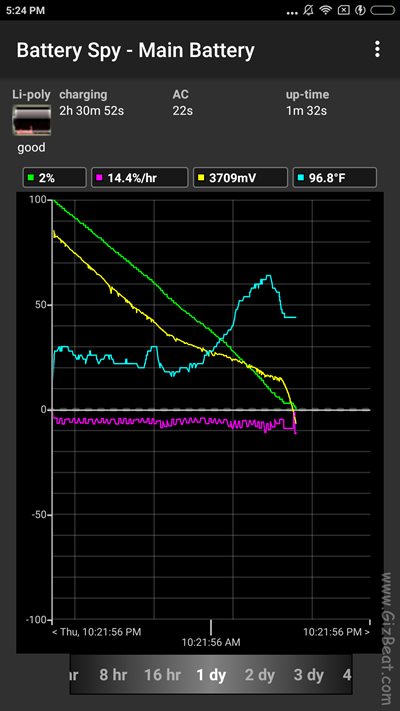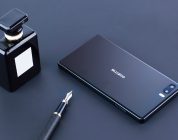Xiaomi Mi Max 2 review summary
- Xiaomi continues to put out winners. The Max 2 gives us Snapdragon 625, incredible battery life, solid charging, a great display, a very good camera, and all around solid to excellent performance from its components
- Max 2 is an easy choice for those looking for a mid-budget priced big display phone
Xiaomi Mi Max 2 review standout features
- 6.44″ display
- FM radio
- Infrared remote
- True 5200mAh battery
- 14nm Snapdragon 625 SoC
- Sony IMX386 camera sensor
- Stereo sound in landscape mode
Not to be confused with Xiaomi Mix, the Max 2 is Xiaomi’s mid-priced 6.44″ display Snap 625 phone.

Xiaomi Mi Max 2 review style and build
5.5″ phones look puny compared to the Max 2. With a 6.44″ display it’s one small step away from being a small tablet.
In contrast to its massive length and width, its depth is a thin 7.9mm. I would say it’s almost too thin but I bought a clear plastic skin and this improved things considerably, adding grip and depth it then felt much more secure single-handed. Highly recommended investing the extra couple bucks in a skin for the Mi Max 2.
As with all recently released Xiaomi phones, the Max 2 looks great. The back is typical Xiaomi sleek matte aluminum. The camera sits in the upper corner and the fingerprint security sits in the middle of the backside.

Due to the size of the display, you get a higher screen:bezel ratio. That is, while the screen is huge, the bezel is the same or shorter than you would find on a typical 5.5″ phone.
Build is solid. The buttons are firm and there are no creaks or loose spots to be found.
Xiaomi Mi Max 2 display
Being that one of the main draws of this phone is its big display, we’d hope for a very good one. On this count, Xiaomi does not disappoint. Not one bit. It looks great, with excellent color and contrast retention at all reasonable angles, minimal IPS glow, and perfect white balance.
Color is impressively saturated and deep; rich and poppy without going overboard and without any hint of fluorescence
Maximum brightness is an excellent 445lux and minimum brightness is 0lux (undetectable by the meter).
Xiaomi Mi Max 2 review SoC
The Mi Max 2 carries Snapdragon 625. This is my favorite mid-range SoC to date. It has enough power to play all 3D games at solid framerates and to push Android butter smooth; yet incredibly efficient in regards to battery life.
Xiaomi Mi Max 2 Antutu

Mi Max 2 Antutu
- Total: 63485
- 3D: 13269
- UX: 24320
- CPU: 20955
- RAM: 5301
Xiaomi Mi Max 2 Geekbench 4
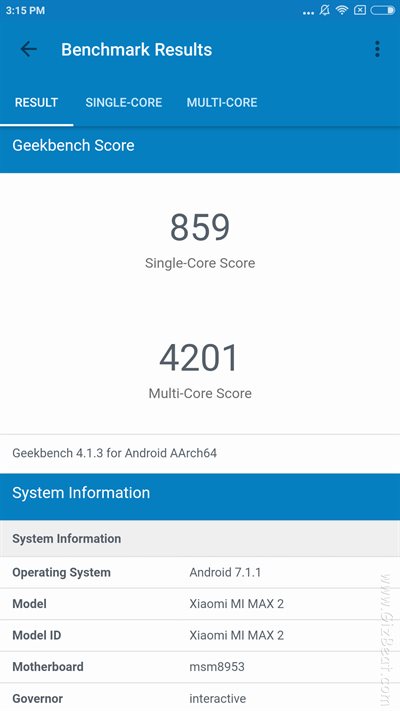
Geekbench 4
- Geekbench 4 Single: 859
- Geekbench 4 Multi: 4201
Xiaomi Mi Max 2 review components
In addition to the standard array of components, the Xiaomi Mi Max 2 carries an infrared remote which often comes in handy, hardware step sensors, FM radio, and stereo speakers in landscape mode.
- Gyroscope — working without issue
- Accelerometer — working without issue
- Light sensor — working without issue. Display brightness appropriately adjusting
- Linear acceleration — working without issue
- Rotation vector — working without issue
- Compass — working without issue
- Gravity — working without issue
- Bluetooth — working without issue (tested Bluetooth headphones and file transfer)
- OTG — working without issue (tested USB SD drive)
- GPS — Excellent. Lock is quick with strong SNR and many satellites
- FM radio — working without issue
- Fingerprint sensor — Excellent. Registering a finger just once allows quick, sloppy scan-ins from all angles. Scan in from deep sleep is no problem
- WiFi — Excellent Reaches 244ft / 44m staying stable and quick. 5GHz WiFi working without issue
- Step sensor — Working without issue
- Loudspeaker — Great. Beyond adequate loudness and solid depth
When putting the Max 2 in landscape orientation Max 2 cleverly uses the earpiece as the left speaker. It’s not as loud nor does it carry as much depth as the main loudspeaker, but does do a decent job of adding some separation and an excellent job of giving a more central sound to videos.
- Gyroscope
- Split-screen
- Engage split-screen (upper-left corner)
- GPS SNR
- Accelerometer
- Compass
Xiaomi Mi Max 2 camera sample image pictures
The camera sensor on the Mi Max 2 is the true optical 12MP 1/2.9″ Sony IMX386. This is a tad bigger than the typical mobile phone sensor, and in combination with Xiaomi’s processing can give us excellent shots in good light and produce images easily good enough for largish 11″x14″ prints.

Focus peaking
- Slow motion — The IMX386 on Mi Max 2 is capable of 120fps@720P slow-motion
- 4K video — The stock Xiaomi camera app gives us the possibility to shoot 4K video
- Intervalometer — Included in stock camera app for time-lapse photography
- Manual camera — ISO sensitivity, focus distance, and shutter speed are available for more control. Setting focus distance is especially useful for taking macro shots
- Focus peaking — In manual mode we are now given focus peaking. This shows us when an object is at optimal focus. Especially useful for macro
- Auto HHT — HHT is especially useful for controlling noise in lower light situations. It takes several shots at once and combines them using a median average to reduce noise
- Auto HDR — Kicks in when a scene has a wide range of brightness. This mode helps to add pop, reduce highlight clipping, and lift shadows. HDR can also be manually enabled or disabled

Big crop, minor edit

Big crop, minor edit
As is usual for Xiaomi, images look very good. The HDR images produce pleasant pop and biggish crops remain sharp and useable. Sharpness is good across the frame without any noticeable corner blur or degradation.
- Time-lapse / Intervelometer
- Metering settings
- Focus mode
The images in the large gallery are unedited other than resize and save at 85% jpg quality. You can look at the full reduced 1080P size images and/or compare the Mi Max images with other phones at our Flickr albums (opens in new tab).
Xiaomi Mi Max 2 OS
- MIUI 9 over Android 7.1.1 (After update. Initially MIUI 8 Android 6)
- Google Certified
- Smooth system animations and transitions
- Smooth slow scrolling
- Appropriate friction and inertia fast scrolling
- Play Store working without issue
- Appropriately transitioning between brightness levels with auto-brightness
- MIUI 9 Global Stable adds no fuss split screen (previous versions required setting up fingerprint sensor to trigger split-screen. Was a real hassle. Now excellent)
- 53GB available for user
- Can add TF SD

Split-screen
Interestingly, we see the Mi Max 2 is Google Certified. This means Xiaomi Mi Max 2 ROM is appropriately coded to pass Google’s rigorous checks.
- Bootloader unlock
- OTA update
- Google certified
- Engage split-screen (upper-left corner)
- Android 7.1.1 MIUI 9
The Google Mobile Suite certifications (GMS) for 7.1.1 contains a massive list of compatibility requirements — 34,500 words, which would take the average native speaker more than 2 hours to read. This is a fantastic sign that Google and Xiaomi are now playing nice together and that the Max 2 is properly put together in all respects.

Lenovo P2, Vernee Mix 2, Mi Max 2
To give you a further idea of the protocols which are needed to pass to acquire GMS certification, check out just the table of contents below. It’s massive.
1. Introduction
2. Device Types
2.1 Device Configurations
3. Software
3.1. Managed API Compatibility
3.1.1. Android Extensions
3.2. Soft API Compatibility
3.2.1. Permissions
3.2.2. Build Parameters
3.2.3. Intent Compatibility
3.2.3.1. Core Application Intents
3.2.3.2. Intent Resolution
3.2.3.3. Intent Namespaces
3.2.3.4. Broadcast Intents
3.2.3.5. Default App Settings
3.3. Native API Compatibility
3.3.1. Application Binary Interfaces
3.3.1.1. Graphic Libraries
3.3.2. 32-bit ARM Native Code Compatibility
3.4. Web Compatibility
3.4.1. WebView Compatibility
3.4.2. Browser Compatibility
3.5. API Behavioral Compatibility
3.6. API Namespaces
3.7. Runtime Compatibility
3.8. User Interface Compatibility
3.8.1. Launcher (Home Screen)
3.8.2. Widgets
3.8.3. Notifications
3.8.4. Search
3.8.5. Toasts
3.8.6. Themes
3.8.7. Live Wallpapers
3.8.8. Activity Switching
3.8.9. Input Management
3.8.10. Lock Screen Media Control
3.8.11. Screen savers (previously Dreams)
3.8.12. Location
3.8.13. Unicode and Font
3.8.14. Multi-windows
3.9. Device Administration
3.9.1 Device Provisioning
3.9.1.1 Device owner provisioning
3.9.1.2 Managed profile provisioning
3.9.2 Managed Profile Support
3.10. Accessibility
3.11. Text-to-Speech
3.12. TV Input Framework
3.12.1. TV App
3.12.1.1. Electronic Program Guide
3.12.1.2. Navigation
3.12.1.3. TV input app linking
3.12.1.4. Time shifting
3.12.1.5. TV recording
3.13. Quick Settings
3.14. Vehicle UI APIs
3.14.1. Vehicle Media UI
4. Application Packaging Compatibility
5. Multimedia Compatibility
5.1. Media Codecs
5.1.1. Audio Codecs
5.1.2. Image Codecs
5.1.3. Video Codecs
5.2. Video Encoding
5.2.1. H.263
5.2.2. H-264
5.2.3. VP8
5.3. Video Decoding
5.3.1. MPEG-2
5.3.2. H.263
5.3.3. MPEG-4
5.3.4. H.264
5.3.5. H.265 (HEVC)
5.3.6. VP8
5.3.7. VP9
5.4. Audio Recording
5.4.1. Raw Audio Capture
5.4.2. Capture for Voice Recognition
5.4.3. Capture for Rerouting of Playback
5.5. Audio Playback
5.5.1. Raw Audio Playback
5.5.2. Audio Effects
5.5.3. Audio Output Volume
5.6. Audio Latency
5.7. Network Protocols
5.8. Secure Media
5.9. Musical Instrument Digital Interface (MIDI)
5.10. Professional Audio
5.11. Capture for Unprocessed
6. Developer Tools and Options Compatibility
6.1. Developer Tools
6.2. Developer Options
7. Hardware Compatibility
7.1. Display and Graphics
7.1.1. Screen Configuration
7.1.1.1. Screen Size
7.1.1.2. Screen Aspect Ratio
7.1.1.3. Screen Density
7.1.2. Display Metrics
7.1.3. Screen Orientation
7.1.4. 2D and 3D Graphics Acceleration
7.1.5. Legacy Application Compatibility Mode
7.1.6. Screen Technology
7.1.7. Secondary Displays
7.2. Input Devices
7.2.1. Keyboard
7.2.2. Non-touch Navigation
7.2.3. Navigation Keys
7.2.4. Touchscreen Input
7.2.5. Fake Touch Input
7.2.6. Game Controller Support
7.2.6.1. Button Mappings
7.2.7. Remote Control
7.3. Sensors
7.3.1. Accelerometer
7.3.2. Magnetometer
7.3.3. GPS
7.3.4. Gyroscope
7.3.5. Barometer
7.3.6. Thermometer
7.3.7. Photometer
7.3.8. Proximity Sensor
7.3.9. High Fidelity Sensors
7.3.10. Fingerprint Sensor
7.3.11. Android Automotive-only sensors
7.3.11.1. Current Gear
7.3.11.2. Day Night Mode
7.3.11.3. Driving Status
7.3.11.4. Wheel Speed
7.3.12. Pose Sensor
7.4. Data Connectivity
7.4.1. Telephony
7.4.1.1. Number Blocking Compatibility
7.4.2. IEEE 802.11 (Wi-Fi)
7.4.2.1. Wi-Fi Direct
7.4.2.2. Wi-Fi Tunneled Direct Link Setup
7.4.3. Bluetooth
7.4.4. Near-Field Communications
7.4.5. Minimum Network Capability
7.4.6. Sync Settings
7.4.7. Data Saver
7.5. Cameras
7.5.1. Rear-Facing Camera
7.5.2. Front-Facing Camera
7.5.3. External Camera
7.5.4. Camera API Behavior
7.5.5. Camera Orientation
7.6. Memory and Storage
7.6.1. Minimum Memory and Storage
7.6.2. Application Shared Storage
7.6.3. Adoptable Storage
7.7. USB
7.7.1. USB peripheral mode
7.7.2. USB host mode
7.8. Audio
7.8.1. Microphone
7.8.2. Audio Output
7.8.2.1. Analog Audio Ports
7.8.3. Near-Ultrasound
7.9. Virtual Reality
7.9.1. Virtual Reality Mode
7.9.2. Virtual Reality High Performance
8. Performance and Power
8.1. User Experience Consistency
8.2. File I/O Access Performance
8.3. Power-Saving Modes
8.4. Power Consumption Accounting
8.5. Consistent Performance
9. Security Model Compatibility
9.1. Permissions
9.2. UID and Process Isolation
9.3. Filesystem Permissions
9.4. Alternate Execution Environments
9.5. Multi-User Support
9.6. Premium SMS Warning
9.7. Kernel Security Features
9.8. Privacy
9.9. Data Storage Encryption
9.9.1. Direct Boot
9.9.2. File Based Encryption
9.9.3. Full Disk Encryption
9.10. Device Integrity
9.11. Keys and Credentials
9.11.1. Secure Lock Screen
9.12. Data Deletion
9.13. Safe Boot Mode
9.14. Automotive Vehicle System Isolation
10. Software Compatibility Testing
10.1. Compatibility Test Suite
10.2. CTS Verifier
11. Updatable Software
12. Document Changelog
12.1. Changelog Viewing Tips
Xiaomi Mi Max 2 battery charging
According to Xiaomi the Mi Max 2 should support Quick Charging at 9V 2A, but it only kicks into this mode for a few seconds when first turning on the phone from power off. It then reverts to a fairly steady 6.2V 2.3A charge for a decent 14.2W charge. This isn’t the full Quick-Charge experience but is a decent step above standard 5V 2A charging.
According to battery life meter testing, the battery is a true 5000mAh.
- 2h to 90% stock charger
- 5V 2A charger 2.5h to 90%
Charging with the included Quick Charger, the Mi Max 2 taps 90% in under two hours and charges to a stable 4.35V. It also continues to saturate significantly after 100%, meaning that if you want an absolute fully saturated charge, leave it charging for 15-20 minutes after it hits 100%.
Xiaomi Mi Max 2 battery life SOT test
Running the Xiaomi Mi Max 2 screenon time test with WiFi / YouTube 720P / 140lux brightness gives us 18 hours 25 minutes, a simply incredible achievement only a slight step behind the Lenovo P2.
This type of battery life wouldn’t have even been dreamed of a year back but now with Snap 625 and these big 4000-5000mAh batteries we have devices which are truly revolutionary in regards to the balance between performance and efficiency. Just incredible.
- 18h 25m screenon
- 18h 25m screenon
The following are some rough estimates; if you’re doing things such as editing and rendering high-resolution video, constantly pushing large amounts of data through LTE, or using the phone at 100% brightness all the time, battery life between charges will be shorter.
- Light users who use their phones an hour or so a day can expect up to a week or more between charges
- Medium use of a couple hours a day, combining WiFi and some LTE should see 3-4 days between charges
- Heavy users should be seeing two days between charges
Xiaomi Mi Max 2 conclusion
This is a no-brainer; those who want long time OS update support, a big display, big RAM+ROM, revolutionary battery life, with a very good camera, can buy the Mi Max 2 with full confidence.


